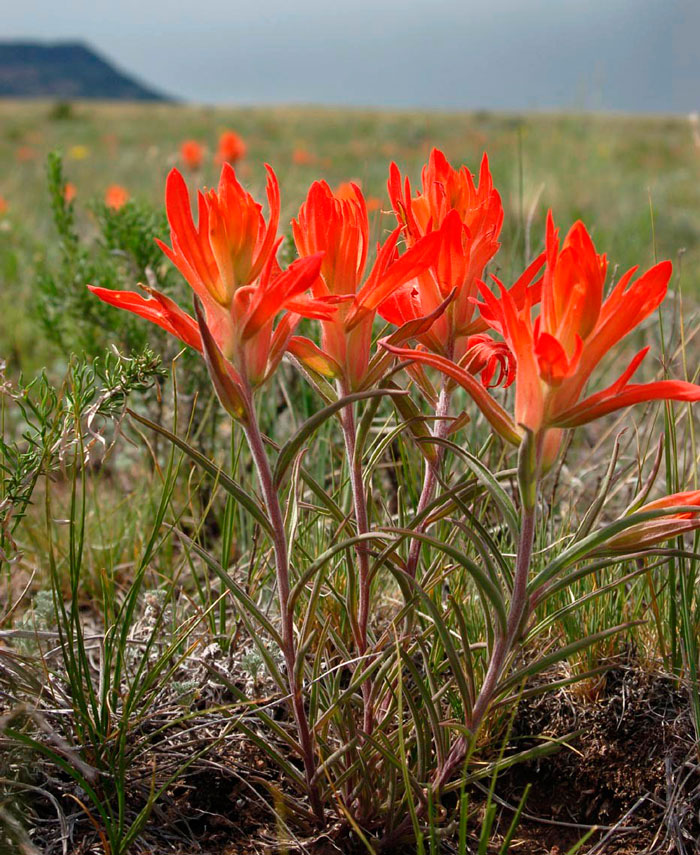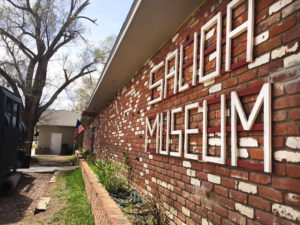By Elliot Jackson
It was not going to be a great day for a road trip in the central mountain high country – one of those spring days where you can only tell the sun is shining because the dirt clouds, whirled into the air by the wind, are shimmering slightly; and gusts of that same wind nudge your car around on the road as if it were a toy. I watched one of these dirt clouds spin up into an improbably towering funnel shape the other day as I was cruising the back roads of the hamlet of Coaldale, Colorado. Finally, I spotted Alex Tonnesen, one of the owners of Western Native Seed – the man I was looking for. He appeared slightly harassed as he waved me down.
“Can we do this later?” he asked apologetically. “We had a mini-tornado come through here just as you were pulling up – tore up one of my willows in front and did in the barn door.”
A bit extreme even by Central Colorado standards, but not totally atypical for a spring day here. The challenges of spring planting in the Rocky Mountain region include not only tornado-strength winds, but the possibility of frosts or snow storms into the summer months, a relative lack of rainfall, and a challenging variety of terrains and micro-climates from Shortgrass Prairie (elevation range 3,000-5,000 feet, 8-12 inches precipitation, summer rain) to High Elevation alpine (elevation range 8,000 – 11,000 feet, 20-36 inches precipitation, winter snow).

However, Western Native Seed is here to help with those challenges. Its name says it all – the company has sold native plant seed mixes tailored for Western state terrains and micro-climates since its founding in 1990. Tonnesen and his partner Suzanne Folke, both biologists by training, took over the business in 1997, after meeting the previous owner on a wetlands field trip: “one thing led to another,” is how Tonnesen puts it.
Western Native Seed mixes include wildflowers, grasses and “meadow mixes” – grass and wildflower seeds mixed together in a 70/30 ratio. There are xeriscape landscaping mixes and wet meadow mixes. The seeds come from a variety of sources: some are available from commercial growers, but others are obtained from independent collectors and harvesters. And some are wild-harvested by Tonnesen and Folke themselves. “We self-harvest things that can’t or won’t be commercially grown,” says Tonnesen. “Things that are either really specialty, like colorful showy wildflowers, or really common, like rabbit brush.”
The business year follows a seasonal rhythm for Western Native Seed. Summer and fall, Tonnesen and Folke are out harvesting. Late fall and winter into early spring, they are drying and testing seeds in their warehouse, and batching up the mixes. In the spring, the harvesting and processing has been done, and the focus is on taking and shipping orders, and consulting with customers’ planting questions via phone or email – mostly email, these days: “All our business is through our website, now,” Tonnesen says.
As with many industries in Colorado, Western Native Seed sees boom-and-bust cycles in sales and interest, based on factors that also affect other businesses here: construction, drought and wildfire. Tonnesen notes that construction is picking up, hence sales to contractors and landscape architects, a large part of his customer base, are starting to pick up as well – part of the road to economic recovery from the 2008 housing market crash. Other customers show more interest in xeriscaping with native plants when drought conditions are bad. And after area wildfires, the government can be the biggest customer of all for native grass seed: the Bureau of Land
[InContentAdTwo]
Management and the Forest Service work with nongovernmental agencies such as CUSP (Coalition for the Upper South Platte) on reseeding projects. “Sometimes,” Tonnesen says, “they’ll order 30,000 pounds of seed and wipe us out!”
Western Native Seed can be reached via their website: www.westernnativeseed.com, by email at: info@westernnativeseed.com
Elliot Jackson lives and writes in Westcliffe, and is really thankful the twister she saw didn’t take her to Kansas, although she still really wants to visit Oz someday.


